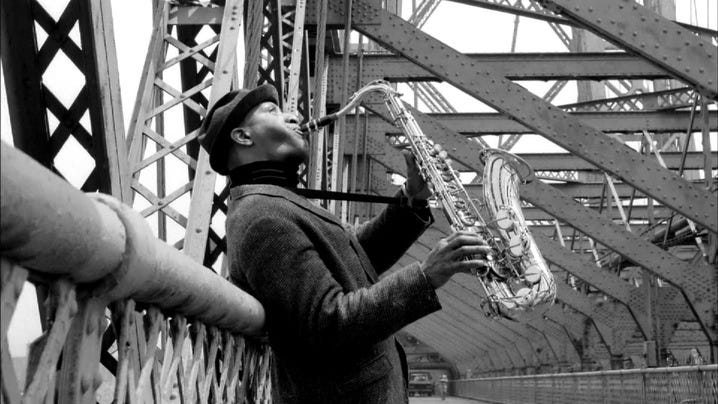Happy Thanksgiving!
For those of you reading abroad, I’m writing from Birmingham, Alabama. In case you can’t tell from the writing, there’s a very slight southern drawl that comes with all of these articles. This is by far my favourite holiday because the expectations are rather pure. Share food with people. The end.
As you may have guessed from reading my blog, many people get interested in the Alexander Technique for one reason or another and slowly they get a little confused and frustrated. They have some type of discomfort and they’d like to experience how exactly this technique works and makes them feel better. Before they start lessons, they erroneously think that there’s an exercise that they will do to make their muscles engage and get stronger; that somehow they have a physical weakness that can be directly fixed.
If you’ve read everything so far, you’ll hopefully understand that we’re building an awareness of the quality of our thinking so that we may notice the quality of weight that we carry through our daily activities. By refining our observations of ourselves we can begin to stand, sit, walk, lie down and transition between these four activities with less collapsing-deadweight and less stiffened-strain.
Your general tool set is built around:
simple, quiet, additive thinking,
using mirrors and videos to observe yourself agnostically
practicing the wrong thing so that you can more accurately feel why it is wrong
practicing the prevention of the wrong thing so that you can feel something else.
In FM Alexander’s Use of the Self, he writes a 14 page essay called Evolution of a Technique. It is something he wrote decades after his career ending injury and is designed to walk the reader through all of the realisations they will need to go through to learn what he learned. During my latest reading of this essay, two things really struck me in a way that they did not on earlier readings. FM says he practiced and was looking for a tendency to have X do/not do Y.
As I have a background in music, I have some vague notion of what a practice routine looks like. Every musician has their own practice strategy and if you start asking them what they do during their practice, you’ll quickly get a few thousand ideas on what to do. But it is universally agreed that if you play an instrument, the quality of tone is the most reliable way of assessing the quality of the musician and should be developed over the course of your whole life.
If I were to make a comparison with your studies of the Alexander Technique, the lie downs that I have asked you to take are the equivalent of your long tone exercises. You are looking to give yourself a great and alert rest so that you can invite weight to tend towards suppleness and volume.
Activities like typing or taking out the trash could be viewed as musical etudes. There’s a clear beginning, middle, and end and if you want to monitor and redirect the quality of your tone in the midst of the etude, you’re going to struggle. For as much as it feels like it’s a good idea to multitask so that you can make gains in a few things at the same time, the reality is that we are quite bad at learning when the combination of skills stacks up too high.
In order to bridge the gap between lying down and typing (in his case, reciting Shakespeare), FM Alexander created some deceptively simple looking exercises. Each and every one of these serve the singular purpose of asking a question of your coordination so that you can practice the prevention of Common Bugaboos. I have already described them as a Rocking Game. These games function like musical scales. It is FINALLY time for you to start practicing SCALES! :)
How Do You Get to Carnegie Hall?
I have a general way that I like to practice the Alexander Technique. If you were to ask 10 different Alexander Technique teachers how to practice, you’d likely get 30 different answers. So please take these tips as general advisement and above and beyond all else, find a practice method that works for YOU!
Tip 1: Take the Time to Practice
The amount of time will be entirely up to you and what’s going on in your life. At a minimum, if you cannot take 15 minutes per day to lie down and 5 minutes per week to read (my blog/FM’s writings/think about what you want), your results will be inconsistent.
Tip 2: Agnostically Assess Your Practice
Sometimes when I go to lie down, I have thoughts rummaging around in my head and the habitual tensions I’m holding stay firmly put. That’s normal! Be honest with yourself that nothing has really happened in this moment and make a decision. Either you should ask all those thoughts to politely Shut the F*@$ Up or you should do something else (walk/nap/go see a movie/live).
What you will not do is tell yourself you just had the best lie down of all time or tell yourself that you suck at Alexander Technique. The only concern we really have here is the process of learning.
Tip 3: Think Before You Leap
In the coming weeks, I will describe how to go Up on Toes, transition into a Squat, and place Hands on the Back of a Chair. These exercises (in the musical sense of the word…not the gym sense) will all ask a question of your coordination. If you Know Your Onion, you’ll have a sense of what you would like to tend to improve. This may be decreasing neck tension, increasing the mobility of your middle back, or preventing yourself from habitually standing with more weight on one foot than the other.
If you don’t know what you’d like to work on. If you have no clue what needs to improve to get your coordination to tend away from dead weight. ASK FOR HELP!!
Tip 4: Use Lie Downs To Enjoy/Assess the Effects of Activities
If you do something like a squat with slightly different coordination, you’ll like feel a whole host of things going on. Some muscles may start screaming, “Why did you move me!?!” and if I’m honest, I really hope this starts to happen for you. Change doesn’t always feel great! I don’t want your joints to crunch or your nerves to get agitated. I want your muscles and bones to move differently.
If you’ve done one or two squats, you may want to walk for 30 seconds to assess what has happened before doing another one. But after maybe 5-10 minutes of activity, you’ll be surprised at what happens when you lie down. The act of stopping may actually bring about further change in the head, neck, and back as the new motion from the squats results in a new way of releasing tension in a lie down.
There’s no need to get obsessive about this process, but I want you to know that the consequences of one activity will carry over into another.
Tip 5: Have Fun and Eat Pie!
Do remember that while all of this sounds very intense, it gets easier with time and should feel great. As things go along, I’ll post little videos of myself practicing so you have an idea of how devilishly simple practicing can be!






